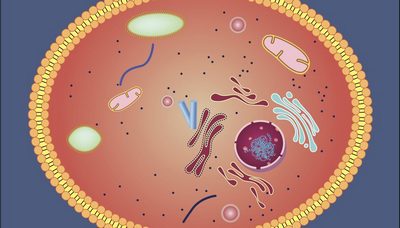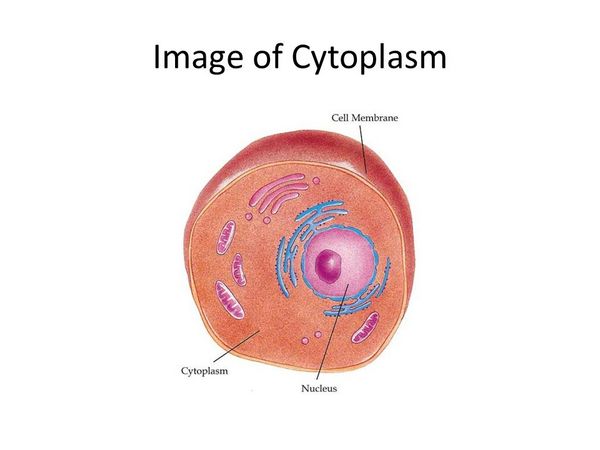Cytoplasm: Definition, Structure and Functions

Content:
CDefinition
What is cytoplasm? Cytoplasm is one of the main parts of the eukaryotic cell. Cytoplasm plays a very important role in the life of a cell; it unites all cellular structures, facilitates their interaction with each other. Besides this, the nucleus of the cell and all organelles are located in the cytoplasm. In other words, cytoplasm is the area of space outside the nucleus that consists of all cell organelles.
Structure
The structure of the cytoplasm includes various chemical compounds, which are not a homogeneous chemical substance, but a complex physicochemical system. Protein mixture in a colloidal state in combination with nucleic acids, fats, and carbohydrates is an important component of the cytoplasm.
Besides this, the cytoplasm is divided into two parts:
- endoplasm,
- exoplasm.
Endoplasm is located in the center of the cell and has a more fluid structure. It contains all the most important organelles of the cell. Exoplasm is located around the perimeter of the cell, in the borders with the membrane. It plays a connecting role in the cell with the environment.
What does cytoplasm look like? Just see this picture.

Function
What is the function of cytoplasm? All processes of cellular metabolism take place in the cytoplasm, with the exception of nucleic acid synthesis (it is carried out in the cell nucleus). In addition to this, cytoplasm does these important jobs:
- cytoplasm fills the cell cavity,
- cytoplasm is a link for cellular components,
- cytoplasm determines the position of organelles,
- cytoplasm is a conductor for physical and chemical processes at the intracellular and intercellular levels,
- cytoplasm maintains the internal pressure of the cell, its volume, elasticity, etc.
Movement
The ability of the cytoplasm to move ensures the connection of cell organelles. In biology, the movement of the cytoplasm is called cyclosis, it is a constant process. The movement of the cytoplasm in the cell may have an oscillatory or circular nature.
Division
The division is another important role of cytoplasm. Cell division would be impossible without cytoplasm. The division of the cytoplasm is carried out through mitosis and meiosis.
Cytosol
Cytoplasm is often confused with cytosol, but these two are entirely different entities related to a cell. What is the difference between cytoplasm and cytosol? While cytoplasm consists of all the contents found inside a cell (excluding the nucleus), cytosol is just the liquid or aqueous part of the cytoplasm.
References and Further Reading
- Shepherd, V. A. (2006). The cytomatrix as a cooperative system of macromolecular and water networks. Current Topics in Developmental Biology. 75. pp. 171–223. doi:10.1016/S0070-2153(06)75006-2. ISBN 9780121531751. PMID 16984813.
- Hogan, C. Michael (2010). “Calcium” Archived 12 June 2012 at the Wayback Machine in Encyclopedia of Earth. A. Jorgensen, C. Cleveland (eds.). National Council for Science and the Environment.
- Kölliker, R. A. v. (1863). Handbuch der Gewebelehre des Menschen. 4. Auflage. Leipzig: Wilhelm Engelmann.
- Bynum, W. F., Browne, E. J. and Porter, Ray (1981). Dictionary of the history of science. Princeton University Press.
- Parker, J. (1972). “Protoplasmic resistance to water deficits”, pp. 125–176 in Kozlowski, T. T. (ed.), Water deficits and plant growth. Vol. III. Plant responses and control of water balance. Academic Press, New York, p. 144.

Author: Pavlo Chaika, Editor-in-Chief of the journal Poznavayka
When writing this article, I tried to make it as interesting and useful as possible. I would be grateful for any feedback and constructive criticism in the form of comments to the article. You can also write your wish/question/suggestion to my mail pavelchaika1983@gmail.com or to Facebook.

